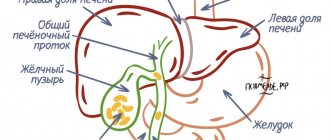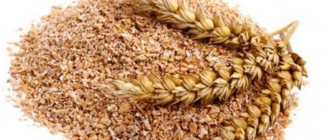Running is a type of physical activity that helps prevent the development of cardiovascular and metabolic diseases. Hemorrhoids are pathological expansion of the hemorrhoidal plexuses, which is caused by inflammatory, idiopathic, thrombotic or infectious causes. In this article we will look at whether it is possible to run with hemorrhoids, and how best to do it.
Haemorrhoids
Attention! Hemorrhoids are the most common type of hemorrhoidal disease in patients over 40 years of age.
Why can hemorrhoids occur when working in an office?
With sedentary work or a sedentary lifestyle, blood circulation in the lower body is disrupted. Redistribution and stagnation of venous blood in the pelvic area and lower extremities, difficulty in its outflow lead to dilation of the veins, including in the anus, as well as to the proliferation of cavernous tissue of the rectum. This is how hemorrhoids are formed. The disease can be asymptomatic for a long time; the developing thickening of the veins is noticeable only to a proctologist during a digital examination.1,2
Pros and cons of jogging for hemorrhoids
Physical activity improves the functional and structural condition of the intestinal tract. It stimulates peristalsis and reduces signs of inflammation. The benefits of physical activity have been proven in randomized studies.
Sports activity as part of a healthy lifestyle usually has a positive effect on hemorrhoidal diseases of various etiologies.
Regular exercise (walking, running), a balanced diet high in fiber and adequate body weight have a positive effect on the digestive system and therefore bowel movements. As is known, chronic constipation is an important risk factor for the formation of hemorrhoids.
Exercises to prevent hemorrhoids during sedentary work
A special preventive complex has been developed to prevent blood stagnation during sedentary work. It includes several exercises:
Stand up and cross your legs. Then rhythmically tense the muscles of the buttocks and rectum. Repeat 3-6 times.
Sit on a chair with a hard seat, tilt your back slightly forward. Squeeze your rectal muscles 3 to 10 times.
Half bridge Lying on your back, arms along your body, lift your pelvis up. The upper back and feet remain pressed to the floor.
Lying on your back, lift your straight legs up one at a time up to 10 times each.
Lying on your back, spread your legs raised and extended forward to the sides and bring them back for 30-60 seconds.
Imitate riding a bicycle with your legs while lying down for 30 to 60 seconds.
Lying on your back, press your legs bent at the knees to your chest 10-12 times.
Get into a position that rests on your knees, elbows and palms. Lower your pelvis sideways to the left and then to the right, trying to touch the floor with your buttocks. Repeat 6-8 times on each side.3
The first two exercises can be performed in the workplace without anyone noticing.
Causes of hemorrhoids
The degree of possible physical activity should be discussed with your doctor.
Before moving on to whether you can run with hemorrhoids or not, you need to learn about the reasons for the development of the disease. More recently, it was believed that only older people suffer from hemorrhoids due to decreased muscle tone, as well as a sedentary lifestyle. But today the disease has become several times younger. Thus, among the patients you can find 20 and 25 year old young men and women. And this happened due to a change in pace and lifestyle. The main causes of hemorrhoids include:
- Overweight, and we are talking more about obesity, when the weight far exceeds the acceptable norms for a particular person. Due to excess weight, the load on the organs increases, and accordingly the load on the spine and pelvis increases.
- Sedentary lifestyle. Today, more than half of people work at a computer, while they sit at it, practically without stopping, that is, breaks are rarely taken, and only to eat. This is why muscle tone decreases, they become sluggish and unable to maintain normal functioning of the pelvic organs
- Vein problems. Often the cause of hemorrhoids is problems with the veins, namely venous insufficiency, which can develop at any age.
- Pregnancy, during which the growing uterus increases pressure on the pelvic organs. Moreover, this pressure occurs constantly
- Childbirth, during which the load on the pelvis is enormous, and it is not uncommon for a woman to develop hemorrhoids during pushing
- Improper nutrition, which leads to deterioration of the condition of blood vessels, their walls weaken, and at the same time, when eating fatty foods, cholesterol plaques form, making the blood vessels more fragile. In addition, poor nutrition most often leads to excess weight.
- Lifting heavy objects. Sometimes the cause of hemorrhoids is the concept of heaviness, especially when the load falls on the back and pelvis. Builders, regardless of age, and other general workers who often have to lift heavy things suffer from this problem.
There are many reasons for the appearance of hemorrhoids, but, in fact, the main one is a change in lifestyle, a person stops moving and sits at the computer, which negatively affects the entire body.
Phlebaven® for hemorrhoids
The flavonoids hesperidin and diosmin, obtained from plants, have shown good results in the non-surgical treatment of hemorrhoids. They increase the tone of the veins, improve microcirculation, and prevent exacerbation of the disease.4
According to the instructions, the drug Flebaven® is used in the treatment of acute hemorrhoids. The dosage and need for use in a particular patient is determined by the attending physician.5
References 1. Karpukhin O.Yu., Modern methods of treating hemorrhoids, Practical Medicine, 2003. 2. Rivkin V.L., Outpatient treatment of hemorrhoids, Hospital-replacing technologies: outpatient surgery, 2014. 3. Association of General Practitioners of the Russian Federation, Clinical guidelines for general practitioners (family doctors): hemorrhoids, 2014. 4. K.E. Mayat, Modern methods of treating hemorrhoids, Attending physician, No. 3, 2008. 5. Instructions for the drug Flebaven®.
Created by experts commissioned by KRKA PHARMA LLC
Golden mean
For hemorrhoids, physical activity that stimulates cardiovascular activity is indicated. Cardio exercises train the heart muscle and peripheral vessels, force them to actively contract and maintain blood circulation at a high level.
Cardio exercise also causes the release of neurotransmitters called endorphins, which signal the body to block pain and reduce stress.
Good activities for hemorrhoids include running, swimming, dancing, fitness, yoga.
Jogging
Walking for hemorrhoids is also shown to be an excellent daily exercise. In addition to pumping blood, jogging and walking stimulate more active breathing. The abdominal and diaphragm muscles are reflexively involved in this process, and additional stimulation of the internal organs and intestines occurs. The blood is saturated with oxygen, the nutrition of the tissues of the damaged rectal mucosa is improved. Also, thanks to the active work of the muscles of the lower extremities, the return of blood from the hemorrhoidal plexus improves. To protect yourself from possible damage to hemorrhoids by friction when running or walking, you can apply a small amount of Vaseline to the anal area.
Fitness
Active blood circulation during cardio exercise removes blood stagnation and activates microcirculation. Against this background, microdamages and rectal cracks heal much better. Fitness works in a similar way for hemorrhoids. These are active exercises with rhythmic movements that allow you to accelerate your heart rate and, accordingly, blood circulation. Choose classes where you work with your own weight, without weights.
Yoga
If you have hemorrhoids, it is better to walk or lie on your back. In this position, the pressure on the pelvic organs is reduced, the abdominal wall relaxes, and favorable conditions are created for the outflow of blood. Even while lying down, you can stimulate this process by performing “scissors” or “bicycle” exercises. You can practice yoga. These activities are calm and do not create unnecessary stress, and some asanas (postures) help not only make the body flexible and strong, but also stimulate the activity of the gastrointestinal tract, eliminate constipation and flatulence, and improve blood flow from the lower part of the body.
Gym
If you have hemorrhoids, you should not allow excessive tension on the abdominal wall. Particular attention should be paid to squats for hemorrhoids. Increasing the weight with which the exercise is performed will inevitably cause blood to accumulate in the lower part of the body, and the specific position contributes to the prolapse of hemorrhoids.
Squats with weights are contraindicated
Weightlifters who go to the gym especially often suffer from this. Typically, all exercises in powerlifting or bodybuilding are performed with super-heavy weights. This contributes to an increase in intra-abdominal pressure and the development of blood stasis.
Still, you can work out in the gym even if you have hemorrhoids. This can be done in remission, but the working weight should be so light that it does not cause tension in the abdominal wall. In addition, in the gym you will need to constantly drink water, because when exercising and sweating, a person loses fluid, and this leads to the development of constipation. Constipation in the case of hemorrhoids is one of the most common causes.
Remember, if lifting weights makes you feel tight or painful in your anal area, stop. There are many other activities if you want to burn calories and build muscle without aggravating your symptoms.
Swimming
Swimming for hemorrhoids can provide excellent physical exercise with minimal side effects.
While in water, the body is as relaxed as possible in terms of intra-abdominal pressure. The load on the muscles is distributed equally, and there is no unnecessary tension on the abdominals. Active movements during swimming also train the cardiovascular system, and proper breathing saturates the blood with oxygen.
The main contraindication to swimming is bleeding from hemorrhoids.
Contraindications
Jogging for mild inflammation of the rectum and internal hemorrhoids without visible pain can bring exceptional benefits to the patient. But there are also conditions in which it is better to temporarily abandon intense physical activity.
Sports that are not recommended:
- weightlifting, bodybuilding;
- boxing, karate, martial arts;
- racing, cycling, equestrianism.
Read also
Kegel exercises for hemorrhoids
Often, varicose hemorrhoidal veins are associated with other pathologies of the circulatory system, some of which are strict contraindications to running. Among them: arterial hypertension, heart failure, venous thrombosis and severe obesity .
Physical activities to avoid if you have hemorrhoids
Kettlebell lifting, weightlifting, martial arts
Improper breathing when lifting weights can increase pressure on internal organs and lead to the development or worsening of hemorrhoids.
Working with kettlebells and barbells is not advisable for those who already suffer from hemorrhoids
The same thing happens during wrestling - if holds are not performed while exhaling, then excessive pressure develops in the abdominal cavity, hemorrhoids can enlarge and protrude outward.
Cycling, horse riding and the like
Physical activity that involves sitting on a saddle or other hard surface puts additional pressure on the affected area for hemorrhoids and can cause pain. This also applies to exercise bikes in the gym; it is better to replace them with an orbitrek.
Hemorrhoids bring a lot of discomfort to everyday life, but this is not a reason to give up an active lifestyle. You just need to choose exercises that you will be comfortable doing even with hemorrhoids.
Weight gain and obesity can become the cause of hemorrhoids in this case.
In what cases is running contraindicated for hemorrhoids?
During the remission stage of hemorrhoidal disease, going for a run is useful. Intense physical exercise improves blood circulation, strengthens the abdominal muscles and pelvic organs. In case of pain and bleeding, as well as in the stages of exacerbation of hemorrhoids, running is contraindicated. In addition to hemorrhoidal disease in the acute phase, running is contraindicated in the presence of other pathologies. Jogging is not recommended for the following diseases:
- hemorrhoids stage 3-4;
- cardiovascular diseases, including severe heart rhythm disorder;
- renal failure;
- postoperative period;
- thrombophlebitis of the lower extremities.
Running will not be beneficial for viral diseases. Even after recovery, it is better to wait 4-5 days for jogging.
People who are overweight should be careful about intense exercise. Doctors recommend starting with walking and switching to running when the body is ready.
Before going for a run, it would not hurt to first consult a doctor if you are over 45 years old and have health problems.











